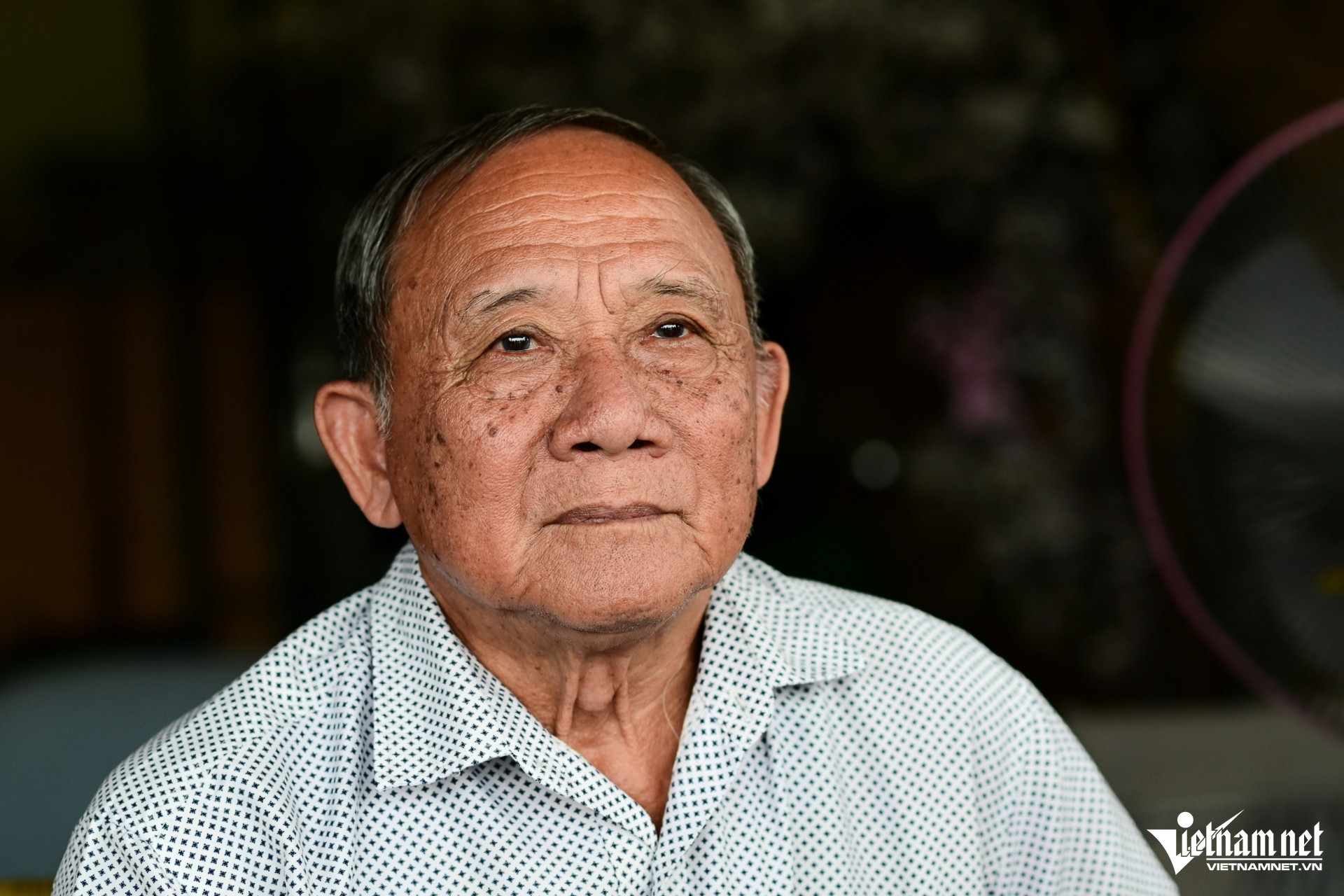
“Dusk on April 28, 50 years ago, I joined Quyet Thang Squadron to drop bombs and strike this airport. But to pull off that historic attack, we began preparing in early April,” On recalled, piecing together memories.
The Air Defense - Air Force Command decided to use captured US planes to bomb Saigon. However, Northern pilots were trained on former USSR MiGs, while the captured American A-37s were entirely unfamiliar to them.
To carry out the mission, the pilots decided to learn and use this type of aircraft with the former pilots of the Republic of Vietnam Air Force. One of the former pilots was Tran Van On.
“They (the pilots from the North) learned fast—within days, everyone had successful test flights,” On recalled.
After the rapid training exceeded expectations, on April 27, 1975 On and others flew to Phu Cat Airport in Binh Dinh Province where he test-flew five A-37s to ensure they were combat-ready for the Saigon strike.
On the morning of April 28, 1975, at Phu Cat Airport, Colonel Le Van Tri, Air Force Commander, selected six pilots (Nguyen Van Luc, Tu De, Han Van Quang, Nguyen Thanh Trung, Hoang Mai Vuong, and Tran Van On) for the mission. The squadron was named Quyet Thang.
By 9.30 am of the same day, five A-37s, each carrying four bombs and four fuel tanks, were ordered to fly from Phu Cat to Thanh on Airport in Phan Rang. They landed, awaiting the order to strike Saigon.
“Since Trung knew Saigon’s well, he led the way. Tu De followed, Luc was third. Vuong and I were fourth, Quang fifth,” he recalled.
“On the way to Saigon, we flew low to avoid radar. Nearing Tan Son Nhat, we veered toward Ba Ria – Vung Tau to mislead the enemy.

“At dusk, as we came back, they (the army of the Republic of Vietnam) still hadn’t spotted us. We circled, locked targets, and dropped bombs. In a flash, dozens of planes were destroyed, the airport ablaze.”
Quyet Thang’s bombing paralyzed Tan Son Nhat, disrupting operations. The US plan to evacuate via heavy jets failed, forcing reliance on small helicopters perched on skyscrapers.
Special pilot
For many years, many called On a unique pilot. Just days before joining Quyet Thang, he was a lieutenant in the Republic of Vietnam Air Force.
Yet, On never wanted to be a pilot.
Born to a poor farming family, On sought to escape poverty through education. After earning his baccalaureate in 1968, he was conscripted during a general mobilization. With good health and education, he was sent to the air force reserves.
In 1971, he was trained on A-37s in the US for 18 months before returning to Da Nang’s Air Corps. There, he gained notoriety for defying orders, sensing the war’s injustice.
“In late March 1975, in Da Nang, I heard the liberation army had freed Hue and was rushing toward the city. Many fled to Saigon or abroad.
“Some urged me to evacuate to Saigon or leave the country. But with the liberation army’s unstoppable momentum, I believed they’d reach Saigon soon. So I chose to stay because I still have my family in my hometown. I didn’t know how I would live abroad, in a foreign land. And most of all, I love my homeland.
“I still say that the decision to join the Quyet Thang Squadron was the best and proudest decision of my life,” he said.
After the historic Tan Son Nhat bombing, On and Sanh, another surrendered pilot, trained new pilots and fought in battles on some islands.
During the Southwest border war, he and his comrades drove back the Khmer Rouge, earning many victories. In 1977, he left the military, quietly returning to his homeland of Tien Giang.
The “lost” medal
In 2005, he sold his garden to fund a trip to Da Nang, seeking papers to confirm his revolutionary contributions.
“In Da Nang, I visited Air Division 372 and met Han Van Quang, then division commander. Reuniting after 30 years, we were overjoyed, emotional,” he recalled.
“Quang called Luc, De, and others in Hanoi, bought two tickets, and took me north to reunite. In Hanoi, the old squadron brothers embraced, tears mixing with joy.”
Later, squadron mates helped improve On’s life. Soon after, Tu De told him he’d been awarded the medal for Tan Son Nhat bombing.
“I was stunned and overjoyed. Only then did I learn about it,” On said.
In August 2008, with dozens of officials and locals watching, a grand ceremony at Go Cong Commune’s People’s Committee awarded On the First-Class Liberation Combat Medal.
Ha Nguyen